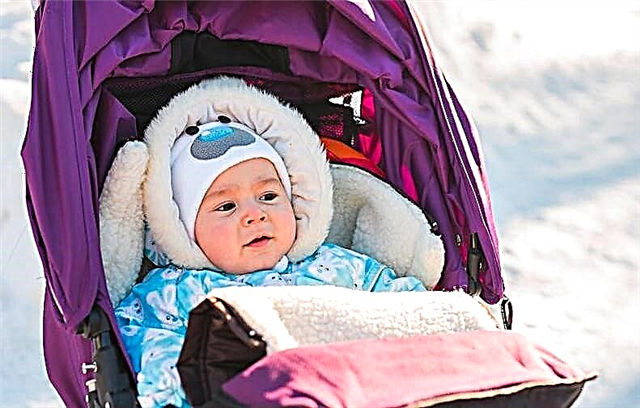
The fourth caesarean section in Russia, and in the world, is done infrequently. However, the lack of widespread widespread practice does not mean a prohibition for a mother of three children, who appeared thanks to the efforts of surgeons, to have a fourth child.
True, such a pregnancy will undoubtedly have its own characteristics, and the operation will be somewhat different from the previous ones. In this article we will consider the likelihood of a fourth caesarean section and the risks associated with it, as well as analyze the opinions of doctors.

Four times mom through surgery - is it possible?
Modern medicine can carry out 4 operations, and 5, and 6, and as many as required. But the risks for the life of the mother and the fetus, for their health, with each subsequent “royal cut” (translated “cesarean section” from Latin) will increase significantly.
Not so long ago, even two caesarean sections puzzled doctors. Then they began to do three operations without question, and women who, for a number of reasons, give birth with the help of a surgeon's scalpel, were given the opportunity to be mothers with many children. They were deprived of such an opportunity until the beginning of our century.


Now the fourth caesarean section is being performed, after all, medicine has at its disposal ample opportunities in terms of the use of new surgical tools and materials, but a woman, even at the stage of registration in a consultation, is warned about the risks of her decision to keep and bear a child, with what complications she can collide during the operation and in the postoperative period.
Risks and Dangers
The main danger lies in the likelihood of divergence of the uterus along the scar. Each subsequent cesarean section is performed along the old scar, each time surgeons have to excision it in order to apply a new suture. Therefore, after three cesarean sections, rarely any woman can boast of a wealthy and reliable scar in the uterus.
The reproductive organ grows as the baby grows, its walls stretch, and the scar also strains. because the risk that he will not stand and burst increases with each subsequent pregnancy. The consequences can be tragic - in most cases, both the child and the mother die.

Because of the scar tissue in the uterus, the likelihood of improper attachment of the placenta increases, which is fraught with intrauterine growth retardation of the fetus, its developmental defects, hypoxia, and premature detachment of the "child's place". With each subsequent operative delivery, the likelihood of total accretion of the placenta to the uterus in the area of the scar increases, if part of the "child's place" enters it. In this case, childbirth ends with the removal of the uterus, since it is not possible to separate the afterbirth with total ingrowth.
It is about this that a woman is warned in consultation when she comes to register for the fourth pregnancy after three cesarean sections in history. Many do not withstand the oppression of prospects and agree to an abortion. Those who remain firm in their intention to give birth gradually begin to understand that everything is not so scary.

To reassure such pregnant women, it can be noted that real cases of divergence of the uterus along the scar during gestation are rare. Much less often than doctors say. The likelihood of ingrowth of the placenta into the scar also does not exceed 2-3%, and the likelihood of complications during pregnancy (hypoxia and fetoplacental insufficiency) is not much higher than the average.
Even if the scar initially after three cesarean sections was not the most ideal, and doctors doubted its viability, that is, clinics and doctors who specialize in the management of such pregnancies. If desired, even with a problematic scar, a woman can carry a baby.

How do they operate?
The technique of the operation is almost the same as in previous interventions, but the fourth caesarean may last longer due to the need to excision and eliminate old adhesions and irregularities in connective tissue.
In the postoperative period, a woman especially needs the use of reducing drugs, because the walls of the uterus after 4 gestations are overstretched, and in the presence of a fresh scar, they contract extremely poorly.


Otherwise, there are no significant differences. Hospitalization should be planned at 37-38 weeks of gestation. If signs of scar failure and the threat of rupture are noticed (and it is necessary to monitor it by ultrasound once every 10 days in the third trimester), the operation can be performed earlier.
Reviews of patients and doctors
According to doctors, there is nothing unusual about a fourth caesarean section. As in the fifth, and even in the sixth. But the modern healthcare system, which requires a lot from the doctor, sometimes leaves the doctor no choice. In order not to be held liable for the possible consequences, if the scar on the uterus is not very good, the doctor is forced to offer the pregnant abortion.
Another approach is in clinics that take on such pregnancies (usually paid). There, a woman can really be encouraged and given hope, especially since the doctors are well aware that the fourth cesarean can be done, it is necessary, and many dangers can be avoided by careful observation of the condition of the future mother.
There are not so many reviews of the patients themselves on the Internet, since so far only a few are resolved for the fourth birth through the KS. The author of this article is one of those who made the decision and did not regret their decision.

Mommies share their experience in the following video.



